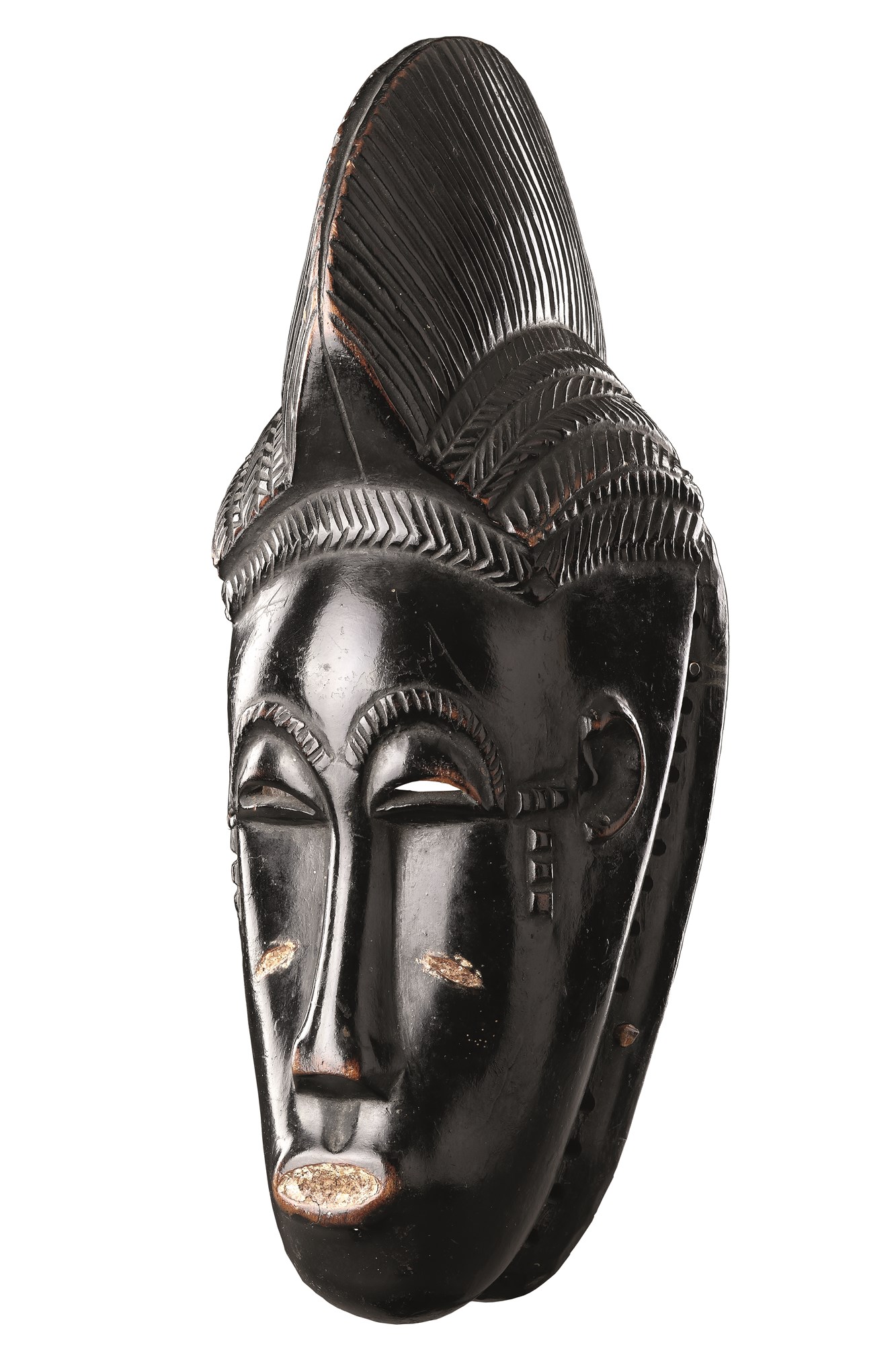A Powerful Baule Mask
Epoque Early 20th century
Medium Wood
Dimension 32.5 cm (12³/₄ inches)
With rich dark ‘lacquered black’ patina, excellent colour with areas of ‘kaolin’
Wood
Ivory Coast
Early 20th Century
Size: 32.5cm high - 12¾ ins high
Epoque: Early 20th century
Medium: Wood
Dimension: 32.5 cm (12³/₄ inches)
Provenance: Formerly in a Private Dutch collection
Ex Lucas Ratton, Paris, France
Ex Private English collection
Literature: A powerful carved elongated mask with a tender prominent open mouth revealing teeth. Scarification marks on each cheek, enhance the sensitively carved long nose; downcast pierced eyes below arching eyebrows. All beneath an elaborate ridged coiffure divided into three lobes painted in black. The whole mask has a very fine patina.
Baule sculpture is one of West Africa’s most significant art traditions. To western eyes, the essence of Baule style is a balanced asymmetry that excites while also suggesting stability and calm. Known for their stylisation, detail and remarkably refined features, these finely carved face masks are of a type that appears in village masquerades for recreational entertainment called ‘Mblo’. These dances and scripted performances are the cultural equivalent to western ‘opera’ or ‘film noire’. Everyone can see them and enjoy the communal event. Between performances the masks were kept out of sight carefully wrapped in bark cloth and hung from the thatch of their dancers’, sleeping rooms.
Many of these masks were brought to Europe in the early 20th century where they were often bought and collected by artists upon whose work they had great influence. For example Modigliani was directly influenced, and Picasso had a Baule / Yaure mask in his studio at Villa La Californie, now in the Musée Picasso in Paris.
Plus d'œuvres d'art de la Galerie









